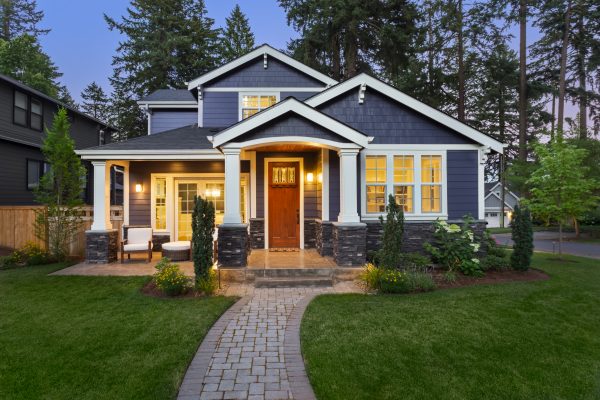A number of styles fall under the umbrella of “traditional” homes. For example, Victorian, Colonial, Craftsman, or Neoclassical architecture all exhibit elements that are considered traditional in design. From varied rooflines to structural embellishments, each of these styles contains flourishes that modern architecture rejects.
While there’s a tendency to think of modern homes as a recent development, Mies Van der Rohe (1886-1969) is considered the pioneer of the modern architecture movement. Known for his “less is more” philosophy, he embraced a minimalist “skin and bones” design that creates feelings of open space and a free flow that are evident at a single glance.
Let’s take a look at the traits that distinguish these very different home styles.
INTRICATE DETAILS VS. CLEAN LINES

Within the category of traditional homes, you’ll find diverse architectural styles as mentioned above. But among them are commonalities that you’ll recognize. For example, Victorian, Colonial, and Craftsman homes embrace expansive porches, columns, and dormers as well as tall rooflines with one or multiple gables.
With their unadorned exteriors, modern homes are easy to discern thanks to their simple, clean lines. Where traditional homes feature elaborate touches, modern homes remove those additional details and allow the structure, often more boxy in design, to speak for itself. Flat or low-sloped rooflines and exteriors with little to no embellishment or textural enhancements are common among modern homes.
CULTIVATING DISTINCT LOOKS THROUGH DIFFERENT MATERIALS
As the name suggests, modern homes often embody state-of-the-art, technologically-advanced building materials, such as sustainably-harvested reclaimed woods, reinforced steel, fiber cement panels, energy-efficient windows, and solar panels.
Traditional home construction utilizes long-standing natural materials such as brick, wood, plaster, stucco, and stone. Often, these components work together to create a unique, customized yet familiar look.
While traditional homes may be painted in any hue a homeowner desires, modern homes tend to be more neutral or natural in color, keeping the focus on the glass, steel or wood from which they’re constructed.
ALLOWING FOR LIGHT

As glass is a material commonly associated with modern homes, it’s no surprise they’re often recognized by their expansive windows. Frank Lloyd Wright, arguably the best-known modern architect, believed in allowing the home to celebrate its surroundings. Large windows not only showcase the grounds, making it part of the decor, they also allow for ample light.
Conversely, traditional homes typically feature symmetrically-placed, smaller windows. Though more diminutive, these windows are often made more interesting by the use of stained glass or hand carved woodwork around the exterior.
FITTING INTO THE NEIGHBORHOOD

Warm and inviting, traditional homes foster an old-fashioned neighborhood feel. Most are found in long-established settings that evoke a place with a sense of history and place.
Modern homes are not without their charm, thanks to their original design and use of natural light. These singular structures are frequently found in beach communities and areas where ample space allows them to make the most of the surrounding landscape.
Choosing between these disparate styles is a matter of taste as each offers its own unique curb appeal. It’s no wonder, both remain perennially popular. If you’re considering a new home, keep in mind that new construction can incorporate the classic features of a traditional style home, while one that’s a century old may be considered modern.
